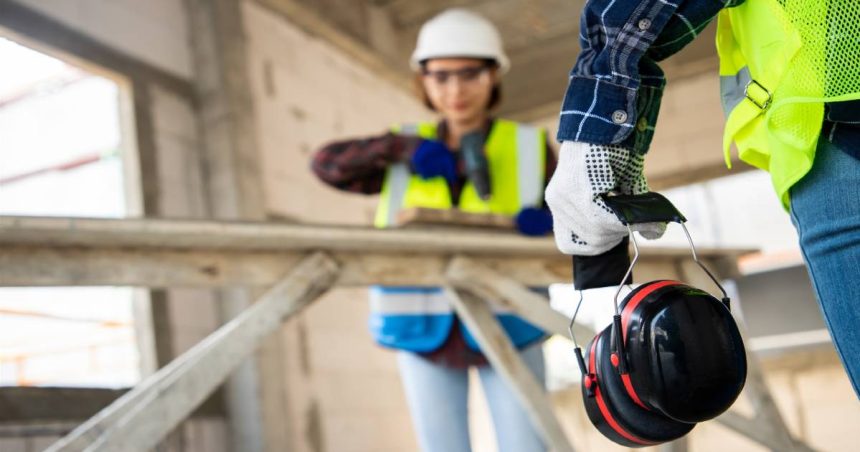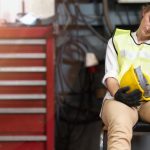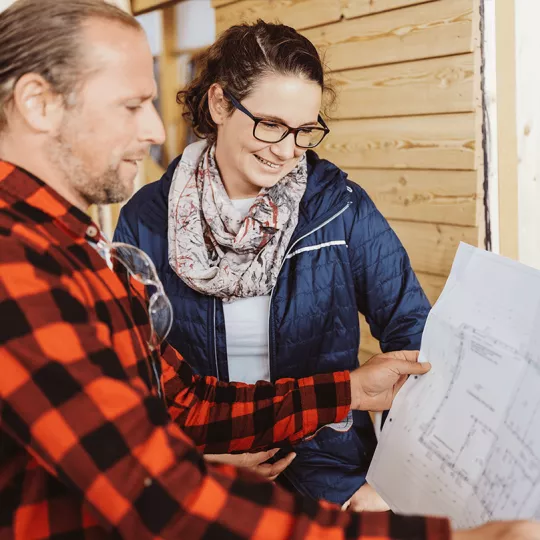New research has revealed that Aussie tradies aren’t doing enough to protect their ears, with one in ten workers suffering hearing damage due to noise exposure on the job.
More than 3.5 million Australians suffer from at least some level of hearing loss, of which approximately 60 per cent of cases could have been entirely avoidable with the use of proper hearing protection.
Hearing loss is irreversible once the damage is done, and those affected may face challenges in their day-to-day activities, especially while on the tools, where job-site safety and communication can be impacted.
That’s why this National Safe Work Month, Hearing Australia and Build-it urge construction workers to prioritise their hearing health—both on the job and after they knock off.
Hearing safety warning falls on deaf ears
Their recently released research also shows that while 20 per cent of Aussies know someone who has experienced workplace-related hearing damage, only one in four uses hearing protection themselves.
Meanwhile, younger tradies admit to being more concerned about appearance than hearing safety, with 25 per cent saying they would be too embarrassed to wear ear protection.
Hearing Australia principal audiologist, Karen Hirschausen, says the findings are a concern given how avoidable noise-induced hearing loss can be.
“Noise-induced hearing loss is one of the most common occupational diseases, but it’s also one of the most preventable,” she explained.
Nicknamed a “stealth hazard”, prolonged exposure to even moderate-level noise, such as the repetitive sound of work tools, can cause hearing loss over time.
Listening to sounds above 85 decibels for more than 8 hours can lead to hearing loss, putting workers in noisy industries—such as construction and mining at significant risk.
“What our research found is that many people overestimate how long they can be in a loud environment without protection,” Karen said.
Researcher and hearing technology engineer for tinnitus app MindEar, Dr Matthieu Recugnat, told Build-it that tradies’ consistently noisy work environments make them one of the highest-risk groups for non-age-related hearing damage.
“Noise exposure is one of the main causes of hearing loss. It’s right up there with age-related hearing loss,” he explained.

“What many tradies fail to realise is that it’s not just the loudness that causes hearing damage, but the duration of exposure. Construction sites are often consistently louder than most other places.”
“One in five people will experience some degree of hearing loss in their lifetime, but it’s much higher for those working in construction.”
Simple steps to protect your hearing on-site
Always wearing earplugs and earmuffs in loud environments is a simple solution that can make all the difference and save your hearing.
A range of ear protection products are designed specifically for particular loudness levels, noise types, and time lengths.
Taking regular breaks from noisy activities and positioning yourself away from loud machinery or speakers can help reduce exposure.
Top tips for working in noisy environments
- Wear hearing protectors such as earplugs or earmuffs.
- Move your workstation away from noise sources.
- Take your breaks (lunch, coffee, etc.) in places with low noise.
- Avoid noisy pastimes that can add to your risk of hearing loss.
- Discuss with your employer how the risk of hearing loss can be reduced.
- Get your hearing checked every year.
However, Karen says it’s essential tradies don’t just down tools on hearing protection once they down tools.
“The National Safe Work Month theme states that safety is everyone’s business – and not just in the workplace; hearing damage can also occur outside work,” she warned.
“Our research found that more than one in five respondents have either experienced hearing damage from leisure activities or know someone who has.”
“Many people don’t fully understand the risk to their hearing …and they overestimate the length of time they can spend in these noisy environments without hearing protection before risking hearing damage.”
Tradies can also take simple steps to protect their hearing using smartphone noise apps that track exposure in real-time.
These apps provide immediate feedback if the noise levels are too high, allowing workers to adjust their behaviour or environment accordingly.
“More broadly, we also encourage people to use smartphone noise apps to track their own noise exposure,” Karen says.
“These apps can be a powerful tool for behavioural change, as you receive real-time feedback if a noise is too loud, so you can adjust your behaviour or the noise. It’s likely to drive greater awareness of sound levels in general.”
Regular hearing checks are another essential step for those frequently exposed to loud environments. Karen urges workers to seek an audiologist’s advice if they notice any changes in their hearing, as early intervention can prevent further damage.
“If you’re in environments exposed to loud noise, you should have your hearing checked regularly. And if you have any concerns or experience changes in your hearing, you should also see an audiologist.”








